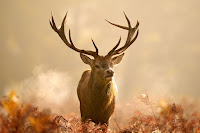How climate change is pushing deer north and could cost North America other animals
Climate change has profound effects on the natural world, and one of the most visible effects is the migration of animals to cooler habitats. Deer are among the species that move, and their northward migration can affect other animals in North America.
Why do deer move north?
Deer move north in search of cooler temperatures and habitats. As the climate warms, their traditional southern ranges are becoming too hot and dry to support them. Deer need access to water and shade to survive, and they increasingly find these resources in more northern latitudes.
How does it affect other animals?
The northward migration of deer has a number of impacts on other animals. For example, wolves that feed on deer are also forced to move north. This puts additional pressure on wolf populations, which are already struggling due to habitat loss and hunting.
In addition, the loss of deer also has a negative effect on plants. Deer are browsers, meaning they eat leaves and other vegetation. Their grazing helps control plant populations, and their absence can lead to overgrowth. This can have a negative impact on other animals that rely on these plants for food or shelter.
What can be done to solve this problem?
The northward migration of deer is a complex problem with no easy solutions. However, there are a number of things that can be done to help mitigate the negative impacts of climate change on wildlife.
An important step is to reduce greenhouse gas emissions. This will help slow the pace of climate change and give animals more time to adapt.
It is also important to protect and manage habitats. This includes creating new wildlife refuges and corridors and restoring degraded habitats.
Finally, it is important to conduct research to better understand the effects of climate change on wildlife.
Climate change is a major threat to wildlife, and the northward migration of deer is just one example of how it is affecting the natural world. We need to take action to reduce greenhouse gas emissions and protect habitats to help wildlife adapt to climate change.
I hope this content is useful. Please let me know if you have any other questions.




Comments
Post a Comment